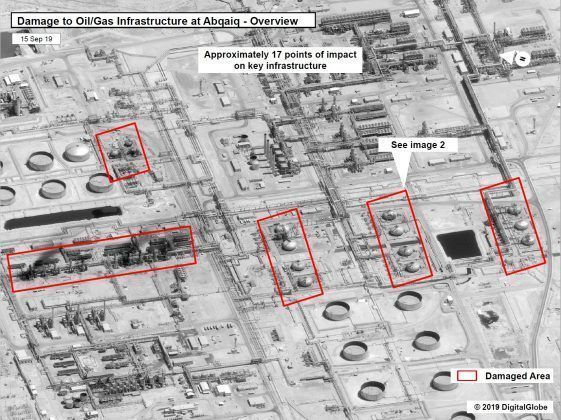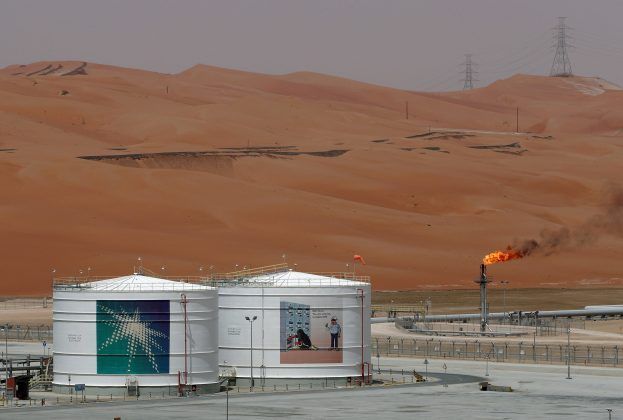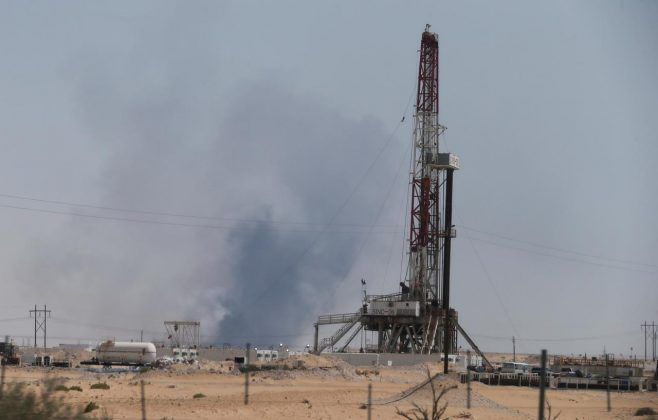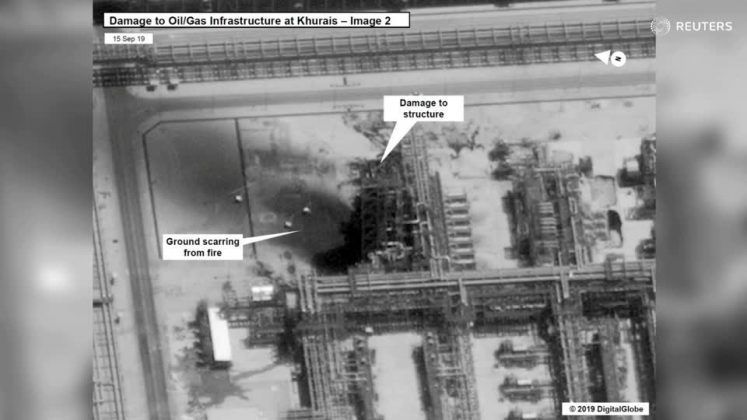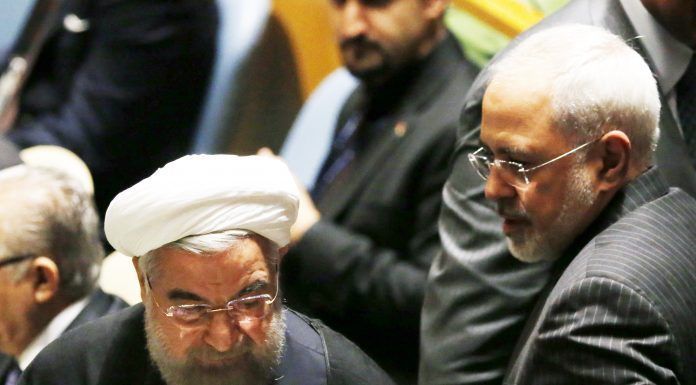U.S. President Donald Trump has announced that an extensive new raft of sanctions will be imposed on Iran, following a drone attack on the world’s largest oil processing facility.
The attack on September 14, which targeted the Abqaiq plant in Saudi Arabia, wiped out 5 percent of the world’s daily output, leading to a surge in oil prices amid fears of a global oil shortage. On the same day, Iran’s Press TV reported that the resulting shortage could be offset only if the U.S. eased its sanctions on Iran’s sales of crude oil.
While Houthi rebels have claimed responsibility for the attack, the U.S. and Saudi Arabia strongly suspect that the Iranian government —which sponsors the Houthis and supplies the militia group with weapons — is to blame for the incident as tensions continue to mount between Washington and Tehran. U.S. military officials say they have uncovered damning new evidence which shows Iranian personnel preparing the weapons used in the strikes against the oil plant. The evidence has not been made public.
The U.S. is “locked and loaded depending on verification” of the culprit, Trump tweeted, implying that a military strike could be a possibility, later announcing that Iran would be subjected to a new set of ‘substantial’ sanctions. Reacting to Trump’s comments, Iran’s foreign Minister Javad Zarif told CNN that any U.S. or Saudi military strike would lead to “all-out war”.
[aesop_image img=”https://kayhanlife.com/wp-content/uploads/2019/09/Trump-Locked-and-Loaded.png” panorama=”off” align=”center” lightbox=”off” captionsrc=”custom” captionposition=”left” revealfx=”off” overlay_revealfx=”off”]
Mina Al-Oraibi, editor-in-chief of The National newspaper based in Abu Dhabi and a Yale World Fellow, told Kayhan Life that the incident offered important insights into the recent attacks on oil pipelines and tankers in the Persian Gulf.
“We’re starting to see a pattern which features the targeting of oil. This latest attack isn’t just targeting Saudi Arabia but the global economy as well. The fact that the actors were able to reach one of the world’s most important lifelines for energy is a significant escalation,” Ms. Al-Oraibi said.
Saudi Arabia has unveiled images of drone and missile fragments which it says prove Iran’s involvement in the attack, though the location from which the missiles were fired is still unknown.
[aesop_image img=”https://kayhanlife.com/wp-content/uploads/2018/11/2018-11-26T102208Z_1756605725_RC1A8282F0E0_RTRMADP_3_SAUDI-CRUDE-OUTPUT.jpg” panorama=”off” credit=”FILE PHOTO: General view of Saudi Aramco’s Ras Tanura oil refinery and oil terminal in Saudi Arabia . REUTERS/Ahmed Jadallah” align=”center” lightbox=”off” captionsrc=”custom” captionposition=”left” revealfx=”off” overlay_revealfx=”off”]
U.S. Secretary of State Mike Pompeo has said that the attack was not carried out by the Houthis but by Iranian forces, a claim which the Iranian government denies. According to Pompeo, the equipment used had never been seen in the Houthis’ arsenal by U.S. agents.
[aesop_image img=”https://kayhanlife.com/wp-content/uploads/2019/09/White-House-Correspondent-.png” panorama=”off” align=”center” lightbox=”off” captionsrc=”custom” captionposition=”left” revealfx=”off” overlay_revealfx=”off”]
The sophistication of the attack has raised questions among military experts about whether the Houthis have the capability to carry out the strikes, which involved 18 drones and seven cruise missiles targeting two oil facilities in the Abqaiq plant.
“An attack with this degree of impact and sophistication is rare,” said John Amble, the editorial director of the Modern War Institute at West Point in New York and co-director of the Urban Warfare Project, in an interview with Kayhan Life.
He added, “Drone attacks inside Saudi Arabia have occurred in the past and have been attributed to Houthi rebels in Yemen, but the range and precision of this attack are both substantially greater.”
Mr. Amble, a military intelligence officer in the U.S. Army Reserve and a veteran of Iraq and Afghanistan, noted that Iran could have been behind the attack. “Iran certainly has the missile technology to hit a target at the range and as precisely as the Saudi sites were hit. The bigger question is whether they have the technology to launch weapons that are capable of getting past the pretty sophisticated air defense systems in Saudi Arabia.”
While more information on the new sanctions being imposed on Iran is due in the coming days, Trump hinted on September 19 that they would include more punitive economic measures.
Richard Nephew, a former Iran sanctions expert who worked with former U.S. President Barack Obama, told Foreign Policy magazine that Trump’s options were limited, as most of Iran’s sectors had been targeted by sanctions, but suggested that the United States could increase restrictions on consumer goods or broaden existing sanctions which targeted the mining and mineral sectors.
Ms. Al-Oraibi said the attack needed a response which went beyond sanctions. “If the U.S. were able to put together a stronger coalition of countries and exert enough pressure from the Europeans to, for example, cut diplomatic relations in order to isolate the Iranian regime, this would send out a message that this kind of behavior is unacceptable. Exerting more pressure on Iran’s proxies could also make a difference,” she explained.
Iran’s President Hassan Rouhani and Foreign Minister Javad Zarif will travel to New York to attend a meeting of world leaders at the United Nations after the U.S. issued visas for the Iranian officials.
U.N. Secretary-General Antonio Guterres said after the attack that the U.N. Security Council could be used as a forum to mediate between Tehran and Washington.


